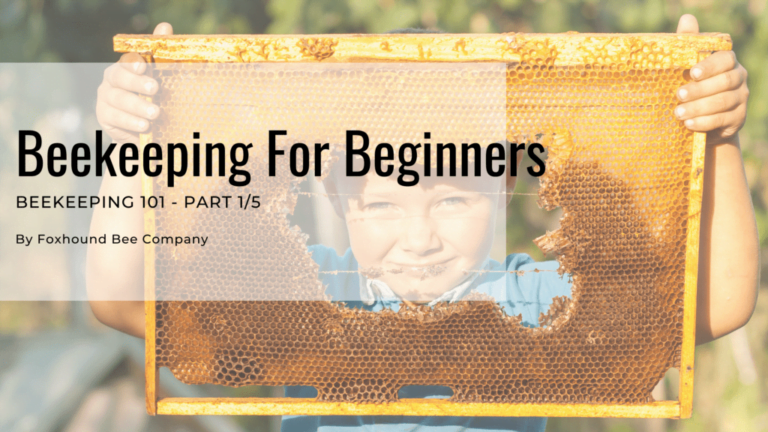
Are you a newbie beekeeper ready to embark on your buzzing adventure? Look no further! In this article, we will provide you with all the essential gear you need to kickstart your beekeeping journey. From protective clothing to hive tools, we’ve got you covered. Get ready to suit up and dive into the fascinating world of beekeeping with the help of these must-have items.
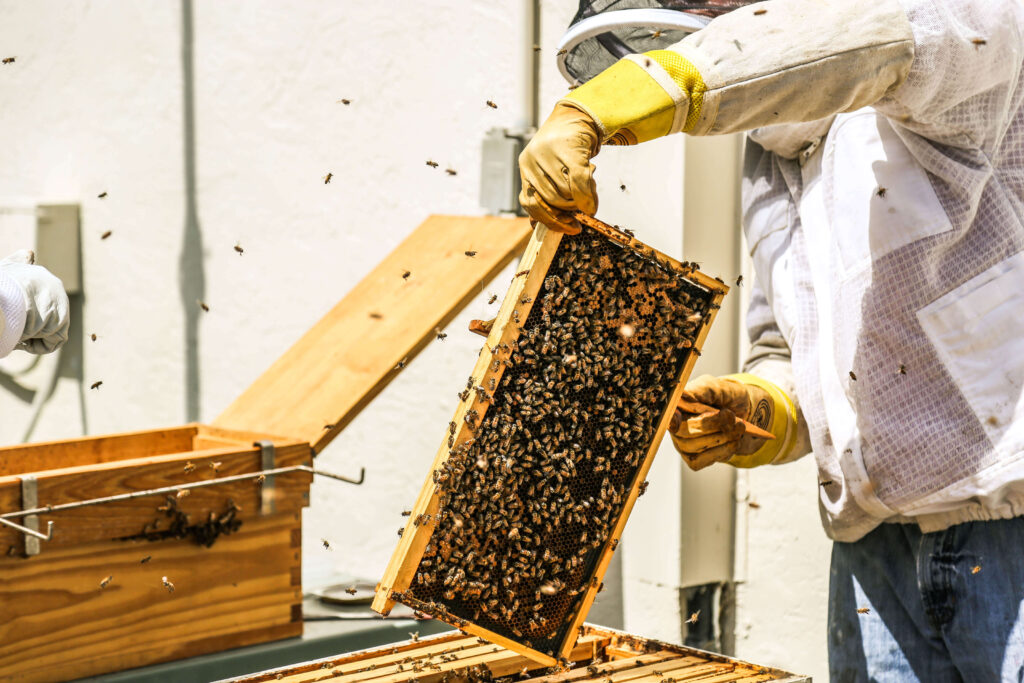
Protective Clothing
When it comes to beekeeping, one of the most important investments you’ll make is in protective clothing. This is crucial in order to safeguard yourself from potential bee stings and to ensure your safety while working with the bees. The most essential piece of protective clothing is the bee suit. A bee suit is a specialized outfit designed to cover your entire body, providing a physical barrier between you and the bees. It typically consists of a full-length jumpsuit made of thick, breathable material that is sting-proof. It also features elastic cuffs and ankle bands to prevent any bees from entering the suit. Some bee suits even come with attached gloves and boots for added protection.
In addition to the bee suit, a veil is another crucial component of protective clothing. The veil is designed to protect your face and neck from bee stings, while still allowing for clear visibility. It is usually made of fine mesh or netting material that is attached to a hat or helmet. By wearing a veil, you can prevent bees from coming into close contact with your face and potentially stinging you. It’s important to ensure that the veil is securely fastened and sealed, so no bees can find their way in.
Gloves are another essential piece of protective clothing for beekeepers. They are typically made of thick and durable material that protects your hands from bee stings. However, it’s important to strike a balance when choosing gloves. They should be thick enough to provide protection, but not too thick that they hinder your dexterity and make it difficult to handle the bees. Some beekeepers prefer to wear nitrile gloves underneath their beekeeping gloves for added protection and ease of movement.
Lastly, don’t forget about your feet! Beekeeping boots are specially designed footwear that protects your feet and ankles from any potential bee stings. They are typically made of durable material and have thick soles to protect against accidental stepping on bees. Beekeeping boots are an important addition to your protective clothing ensemble to ensure that no part of your body is left vulnerable to stings.
Beekeeping Tools
In addition to protective clothing, a beekeeper requires a number of tools to effectively manage their hives. One of the most basic and important tools is the hive tool. This essential instrument is used to pry apart the hive components, such as hive bodies and frames, for inspection and maintenance purposes. The hive tool is similar to a crowbar, with a flat blade on one end and a hooked or curved end on the other. It allows beekeepers to carefully and gently separate the components without causing any damage to the hive or injuring the bees.
Another important tool in a beekeeper’s arsenal is the bee brush. This soft-bristled brush is used to gently brush bees off frames and other hive components during inspections. The brush is a gentle and effective way to move bees without causing them harm or agitation. It enables beekeepers to have better visibility and access to the frames for inspection and maintenance.
A smoker is another indispensable tool for beekeepers. It is designed to calm the bees during inspections by releasing cool smoke into the hive. The smoke triggers a natural response in the bees, causing them to become less defensive and more focused on consuming honey. This allows beekeepers to work more safely and efficiently by reducing the risk of bee stings and minimizing disruptions to the hive.
Feeders are another important tool for beekeepers, especially during periods of nectar dearth or when supplementing their bees’ diet. These devices are used to provide additional food, such as sugar syrup or pollen substitute, to the bees. Feeders come in various types, such as frame feeders that fit directly into the hive, entrance feeders that attach to the entrance of the hive, or top feeders that sit on top of the hive. Choosing the right feeder depends on your hive setup and the specific needs of your bees.
A queen excluder is a tool that is used to prevent the queen bee from laying eggs in certain parts of the hive. It typically consists of a screen or grid with small openings that allow worker bees to pass through, but not the larger queen. This tool is useful when you want to confine the queen to the brood chamber or keep her out of honey supers. It helps to maintain separate areas for brood rearing and honey production.
Hive beetle traps are essential for controlling and managing hive beetles, which can be a common pest in beekeeping. These small, plastic or wooden traps are designed to lure and trap hive beetles, preventing them from causing damage to the hive and its contents. They are typically placed within the hive and contain a sticky substance or oil that captures the beetles.
A frame holder is a handy tool that allows beekeepers to conveniently hold and manipulate frames during inspections or when working with the hive. It provides a stable and secure grip on the frame, making it easier to examine and manage the bees. Frame holders come in various designs, including handheld grips or clamps that attach to the hive, providing beekeepers with flexibility and ease of use.
Hive Components
In order to establish and maintain a successful bee colony, you’ll need various hive components. The hive body is the main structure that houses the bees and their activities. It typically consists of multiple boxes or chambers stacked on top of each other, known as supers. The hive bodies are where bees build their comb, rear brood, and store honey.
Frames are an integral part of the hive and provide the structure for the bees’ comb. They are usually made of wood or plastic and have a foundation attached to them, which serves as a base for the bees to build their wax comb. Frames are removable, allowing beekeepers to inspect them and manage the colony easily.
Foundation is a crucial component that provides a guide for bees to build their comb. It is usually made of beeswax or plastic and comes in various sizes to match the size of the frames. The foundation helps to ensure that the comb is built in a uniform and organized manner, making it easier for beekeepers to manage and extract honey.
An inner cover is a removable cover that sits on top of the uppermost hive body. It provides insulation and ventilation to the hive while allowing beekeepers to access the hive without fully disturbing the bees. The inner cover also helps to reduce moisture buildup within the hive, which can be detrimental to the bees’ health.
An outer cover is the topmost cover of the hive and protects it from the elements. It provides a protective barrier against rain, wind, and other environmental factors. The outer cover also helps to insulate the hive, keeping the bees warm in cold weather and cool in hot weather.
The bottom board is the base of the hive and provides a foundation for the entire structure. It can be solid or screened, depending on your needs and climate. A solid bottom board provides better insulation and protection against pests, while a screened bottom board offers improved ventilation and airflow within the hive.
Hive Accessories
In addition to the core hive components, there are various accessories that can enhance the functionality and convenience of your hive. One essential accessory is the mouse guard, which is used to prevent mice and other small rodents from entering the hive in search of shelter or food. It typically consists of a metal or plastic device that covers the hive entrance, allowing only bees to pass through.
An entrance reducer is another important accessory for the hive, especially during periods of weak or small colonies. It is a device that limits the size of the hive entrance, making it easier for the bees to defend and regulate the temperature within the hive. Entrance reducers are typically made of wood or metal and come in different configurations to accommodate various hive entrances.
A top feeder is a valuable accessory for providing supplemental food to the bees. It is typically a container that sits on top of the hive, allowing the bees direct access to the food source. Top feeders are commonly used when feeding sugar syrup or pollen substitute to the bees during times of scarcity or when stimulating colony growth.
A queen cage is a small device used for safely introducing a new queen bee into an existing colony. It typically consists of a small plastic or wooden cage with small openings that allow worker bees to interact with the queen while keeping her separated. This allows the bees to get accustomed to the new queen’s pheromones and accept her presence in the colony.
A division board is a removable panel that allows beekeepers to temporarily divide a hive into separate sections. It is typically used when splitting colonies or conducting queen rearing activities. The division board creates a physical barrier within the hive, enabling beekeepers to control the movement and interaction of bees.
A hive stand is a simple yet important accessory that elevates the hive off the ground. It provides stability and prevents the hive from sitting directly on wet or uneven surfaces. Hive stands come in various designs, including wooden legs, metal stands, or cinder blocks, and help to protect the hive from potential damage.
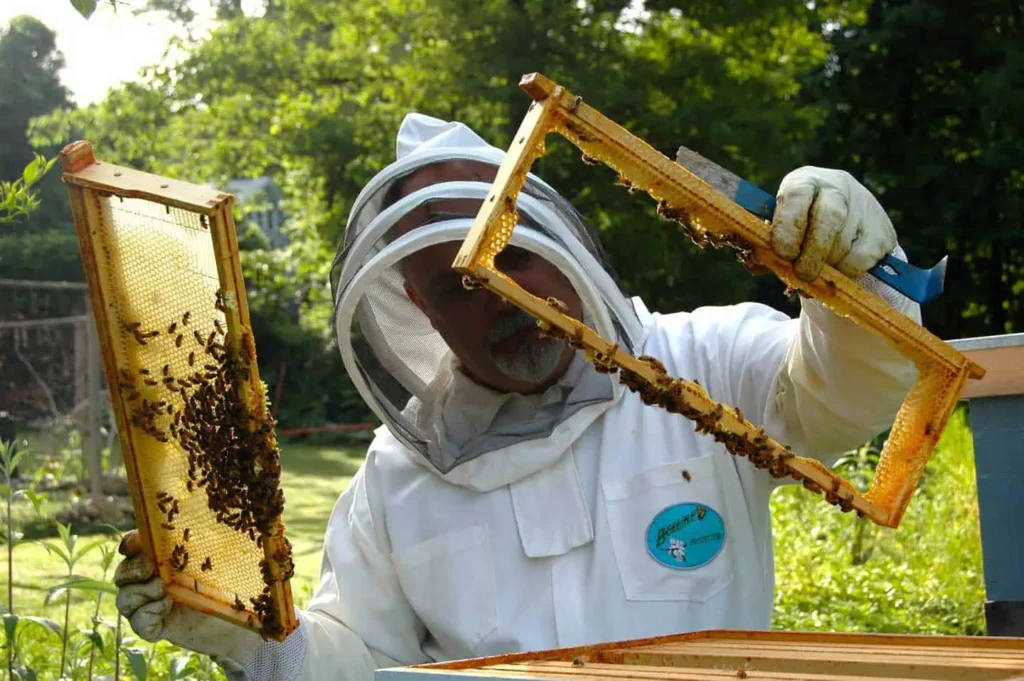
Beekeeping Equipment
Apart from the hive and its components, there is a range of equipment that beekeepers need for honey extraction and other beekeeping tasks. One of the essential pieces of beekeeping equipment is a beekeeping suit case, which allows you to safely transport your beekeeping gear. It is typically a sturdy and protective case that is designed to hold all your tools, protective clothing, and other essentials.
An extractor is a must-have equipment for beekeepers who aim to harvest honey from their hives. It is a mechanical device that uses centrifugal force to extract honey from the comb without damaging it. Extractors come in different sizes and configurations, ranging from small, manual extractors for hobbyists to large, electric extractors for commercial operations.
An uncapping knife is another important tool used during the honey extraction process. It is a heated knife that is used to remove the wax cappings from the honeycomb cells before placing them in the extractor. Uncapping knives can be electric or manual, and they help to expose the honey for extraction.
A bottling bucket is an essential piece of equipment for beekeepers who want to package and store their extracted honey. It is a food-grade container with a built-in honey gate that allows for easy and controlled pouring of the honey into jars. Bottling buckets come in various sizes, allowing you to handle different amounts of honey.
A strainer is a fine mesh filter that is used to remove any impurities or debris from the extracted honey. It is typically placed over the bottling bucket or another container to catch any foreign particles and ensure that the honey is clean and pure.
An uncapping tank is a large container that is used to collect and store the wax cappings removed during the honey extraction process. The wax cappings contain residual honey that can be collected and processed separately. Uncapping tanks usually have a heating element to melt the wax and separate it from the honey.
Beekeeping Supplies
In order to successfully manage your beehives and support your bees’ health and well-being, a range of beekeeping supplies is necessary. Bee food, such as sugar syrup or pollen substitute, is often used by beekeepers to supplement their bees’ diet during times of scarcity or when stimulating colony growth. It provides essential nutrients and energy to the bees, ensuring their survival and productivity.
Feeders are essential tools for delivering bee food to the bees. They come in various types, including frame feeders, entrance feeders, and top feeders, as discussed earlier. Choosing the right feeder depends on the hive setup and the specific needs of your bees.
Pollination aids are products that help to enhance or optimize the pollination process. This can include products such as pollen patties or sprays that supplement the bees’ natural forage and ensure they have access to adequate pollen resources. Pollination aids are especially valuable when there is a lack of natural pollen sources in the area.
A queen rearing kit is a set of tools and equipment specifically designed for beekeepers who want to propagate or raise their own queen bees. It typically includes tools for grafting larvae, queen cages, and other supplies necessary for successful queen rearing activities.
Beekeeping books are a valuable resource for both beginner and experienced beekeepers. From beginner’s guides to in-depth manuals on specific topics, there is a wealth of knowledge available in the form of books. They provide an excellent source of information and guidance, enabling beekeepers to continually learn and improve their skills.
Labels and markers are essential for proper hive management and organization. Properly labeling hive components, honey jars, and other supplies helps keep everything organized and easily identifiable. Marking tools, such as paint pens or labels, are essential for accurately tracking and noting important information about your hives and honey production.
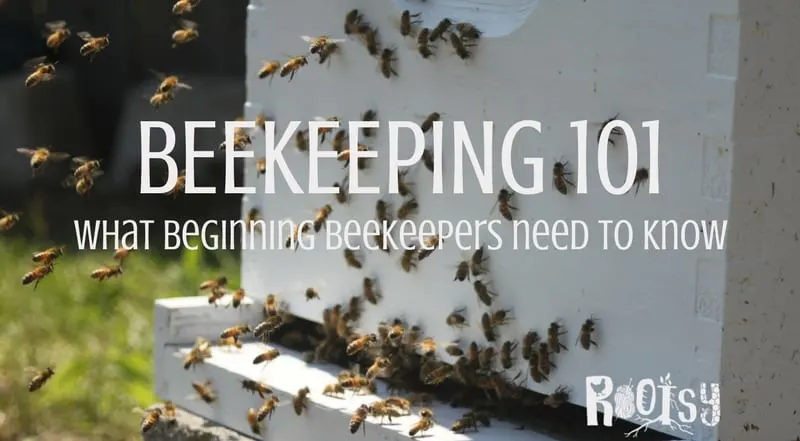
Honey Production
Honey production is one of the main objectives of beekeeping, and there are several tools and equipment that can help you achieve a successful harvest. Honey supers are additional boxes or chambers that are added to the hive to provide extra space for honey storage. They are typically added above the brood chamber and frames, allowing the bees to store surplus honey.
A queen excluder is a useful tool during honey production, as it helps to confine the queen bee to the brood chamber and prevent her from laying eggs in the honey supers. This ensures that the honey supers remain free of brood and are solely dedicated to honey storage.
An uncapping tub is a large container that is used to hold the frames while they are being uncapped during the honey extraction process. It collects the wax cappings and honey that are removed from the frames, allowing for easy cleanup and processing.
A bee escape is a device that aids in the removal of bees from honey supers. It is typically a one-way valve or passage that allows bees to exit the honey supers but prevents them from re-entering. Bee escapes are typically placed between the honey supers and the brood chamber a day or two before harvesting honey, allowing the bees to vacate the supers.
Bottling and storage containers are essential for storing and preserving your harvested honey. They can range from glass jars with tight-fitting lids to plastic squeeze bottles. Choosing the right containers depends on your preferences and the quantity of honey being stored.
Health and Medication
In order to maintain the health and well-being of your bees, it is important to have access to a range of health and medication products. Varroa mite treatment is a crucial aspect of beekeeping, as varroa mites are a common and destructive pest that can weaken and kill bee colonies. Various treatments, such as formic acid strips or oxalic acid vaporizers, can be used to control and manage varroa mite populations.
Pollen substitute is another important product that can be used to supplement the bees’ diet. It provides essential nutrients and protein when natural pollen sources are scarce or of poor quality. Pollen substitute typically comes in the form of powder or patties and is placed within the hive for the bees to consume.
Bee medications are available to treat and prevent various bee diseases and infections. These medications are typically in the form of treatments or medications that are added to the hive or administered to the bees as needed. They may target specific diseases or provide broad-spectrum protection against common bee ailments.
Bee vitamins are nutritional supplements that can help support the overall health and vitality of your bees. They provide essential vitamins and minerals that may not be available in sufficient quantities from natural forage. Bee vitamins can be added to the bees’ food or provided in other forms, depending on the product.
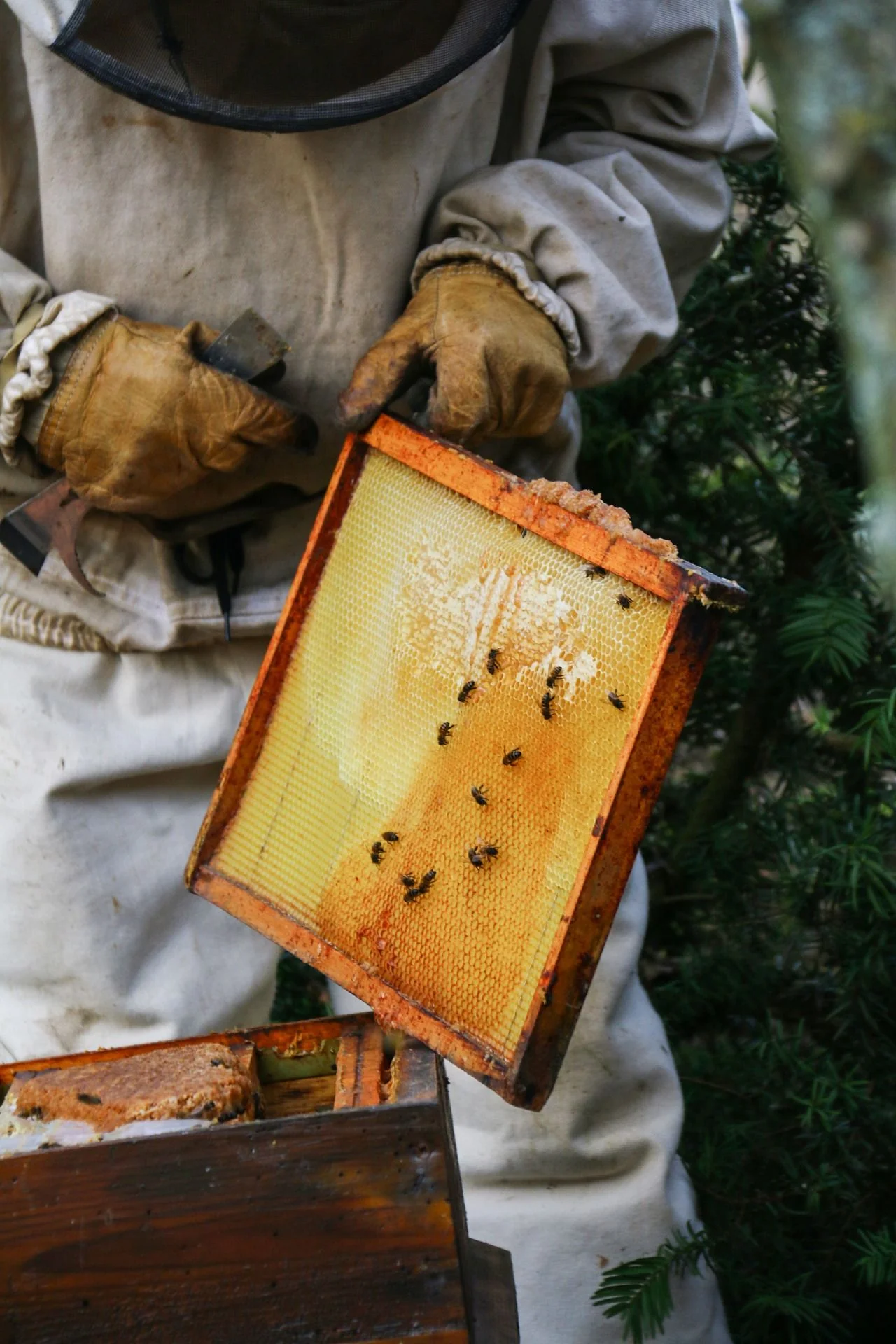
Transportation and Storage
Transportation and storage are important considerations for beekeepers, especially when it comes to moving hives or storing equipment. A beekeeping trailer is a specialized trailer designed to safely transport beehives and beekeeping equipment. It typically features compartments or racks to secure the hives and equipment during transit, ensuring their safety and stability.
A beekeeping nucleus box is a small, temporary hive used for transporting or splitting bee colonies. It is typically smaller than a full-size hive and allows beekeepers to move bees to different locations or create new bee colonies. Nucleus boxes provide a secure and temporary home for the bees during the transportation or splitting process.
A beekeeping suit case, as mentioned earlier, is an essential piece of equipment for safely storing and transporting your beekeeping gear. It is typically designed to hold all your tools, protective clothing, and other essentials in a secure and organized manner, making it convenient and efficient when on the move.
Storage containers are necessary for safely storing beekeeping equipment and supplies when they are not in use. They help to keep your gear clean, organized, and protected from the elements. Storage containers can range from simple plastic bins to more elaborate cabinets or shelves, depending on the size and quantity of your equipment.
Educational Resources
Beekeeping is a fascinating and intricate practice, and continuous learning is key to success. Thankfully, there are various educational resources available to help you expand your knowledge and skills as a beekeeper. Beekeeping classes provide hands-on training and instruction, allowing you to learn the basics and gain practical experience. These classes are often offered by local beekeeping associations or agricultural institutions.
Beekeeping associations are valuable resources for beekeepers of all levels of experience. They provide a platform for beekeepers to connect, share knowledge, and learn from one another. Associations often host regular meetings, workshops, and events where members can exchange ideas, ask questions, and stay up to date with the latest practices and advancements in beekeeping.
Online forums and communities are a convenient and accessible way to connect with other beekeepers from around the world. These platforms allow beekeepers to ask questions, share experiences, and receive feedback from a diverse community of fellow enthusiasts. Online forums provide a wealth of information, expert advice, and support from experienced beekeepers.
Books on beekeeping are excellent resources for both beginners and experienced beekeepers. They cover a wide range of topics, including hive management, apiary setup, honey production, and bee health. Beekeeping books offer in-depth knowledge, guidance, and inspiration, making them valuable companions throughout your beekeeping journey.
Beekeeping workshops are specialized training sessions that focus on specific aspects of beekeeping. These workshops are often conducted by expert beekeepers or industry professionals and provide a deep dive into a particular topic or skill set. Workshops offer hands-on learning experiences and are a great way to enhance your understanding and proficiency in beekeeping.
In conclusion, beekeeping requires a comprehensive range of gear, tools, and equipment to ensure the safety of the beekeeper, proper hive management, honey production, and the overall health and well-being of the bees. From protective clothing and beekeeping tools to hive components and accessories, each item plays a vital role in successful beekeeping. Additionally, beekeepers can benefit from educational resources, such as classes, associations, online forums, and books, to continually expand their knowledge and skills. By investing in the essential gear and continuously learning, every newbie can embark on a rewarding and fulfilling journey as a beekeeper.
